With two leaveners, this cornbread with self rising flour rises high and is deliciously soft and fluffy! All purpose flour self rising is a common ingredient for baking southern cornbread, but after your first bite of this incredible treat, we think you’ll become a believer in 2 rising agents being better than one!
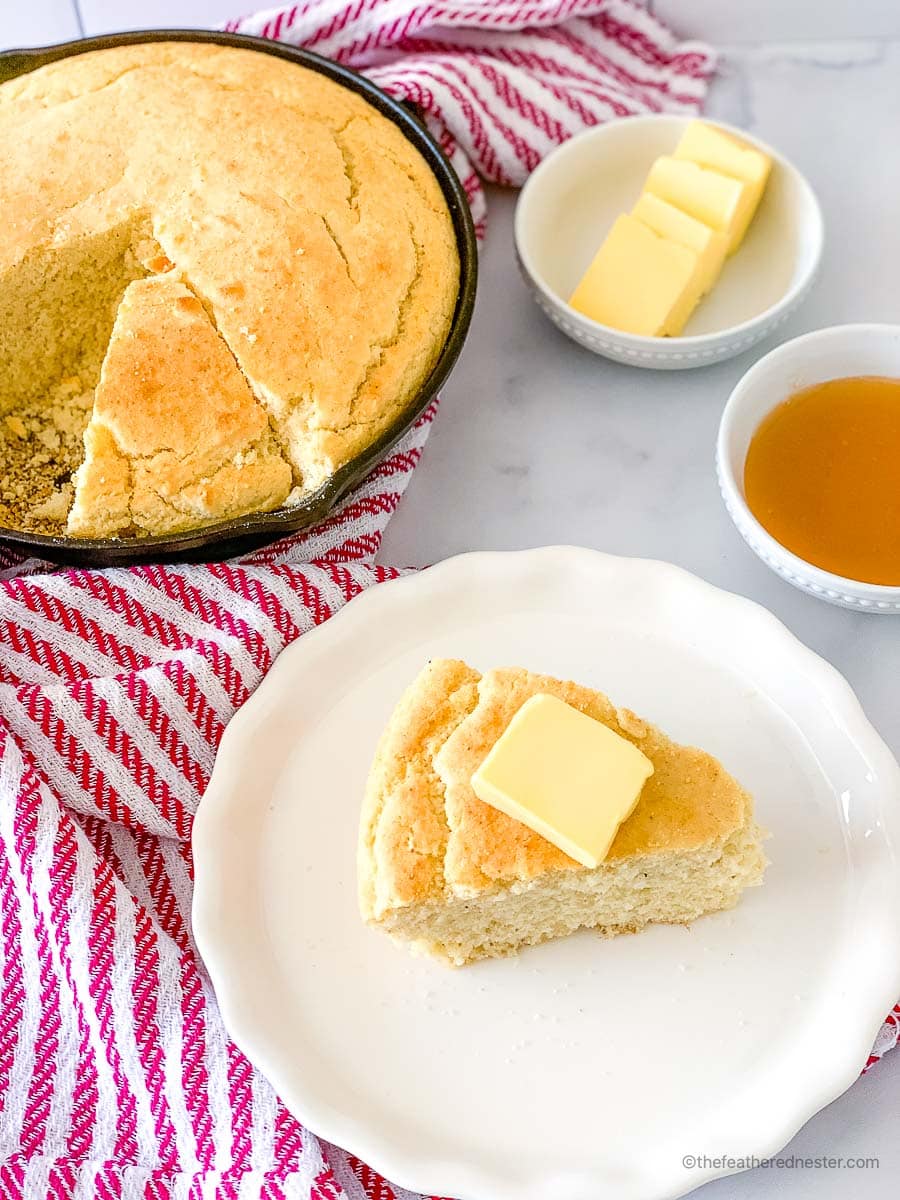
Content Covered Here
Why We Love This Cornbread With Self Rising Flour Recipe
- Fewer ingredients means less prep time.
The classic Southern cornbread recipe just got even easier because, with this recipe, you’ll have fewer ingredients to measure. - Uses baking hacks to avoid expensive ingredients.
Have you noticed how expensive dairy products have become? You’ll be happy to know that you can avoid the cost of expensive buttermilk by making your own using regular milk and vinegar. We’ll show you how! - Bakes up quickly for a last-minute side dish.
This is one side dish the whole family will love, and you can have a batch ready for them in just 30 minutes.
Whether you serve it in big, thick wedges with a fast easy chili recipe or crumble it up to make Jiffy cornbread dressing, we think you’ll love this quickbread!
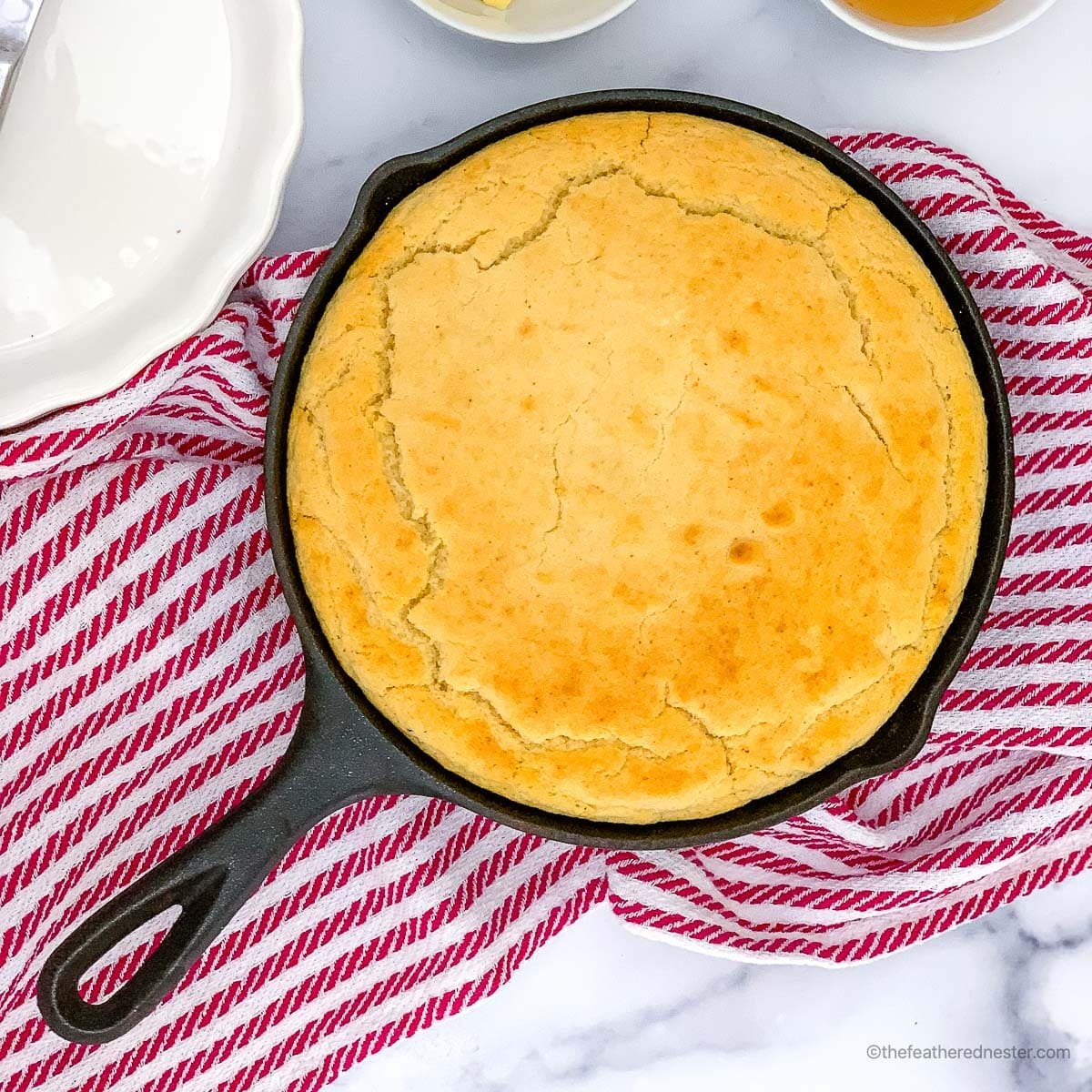
Looking for other quick and easy cornbread recipes?
Our how to make cornbread without cornmeal will knock your socks off, as will our recipe corn muffins with creamed corn. If you enjoy a little kick of spice, make a batch of jiffy cheddar jalapeno cornbread!
Ingredient Notes and Substitutions
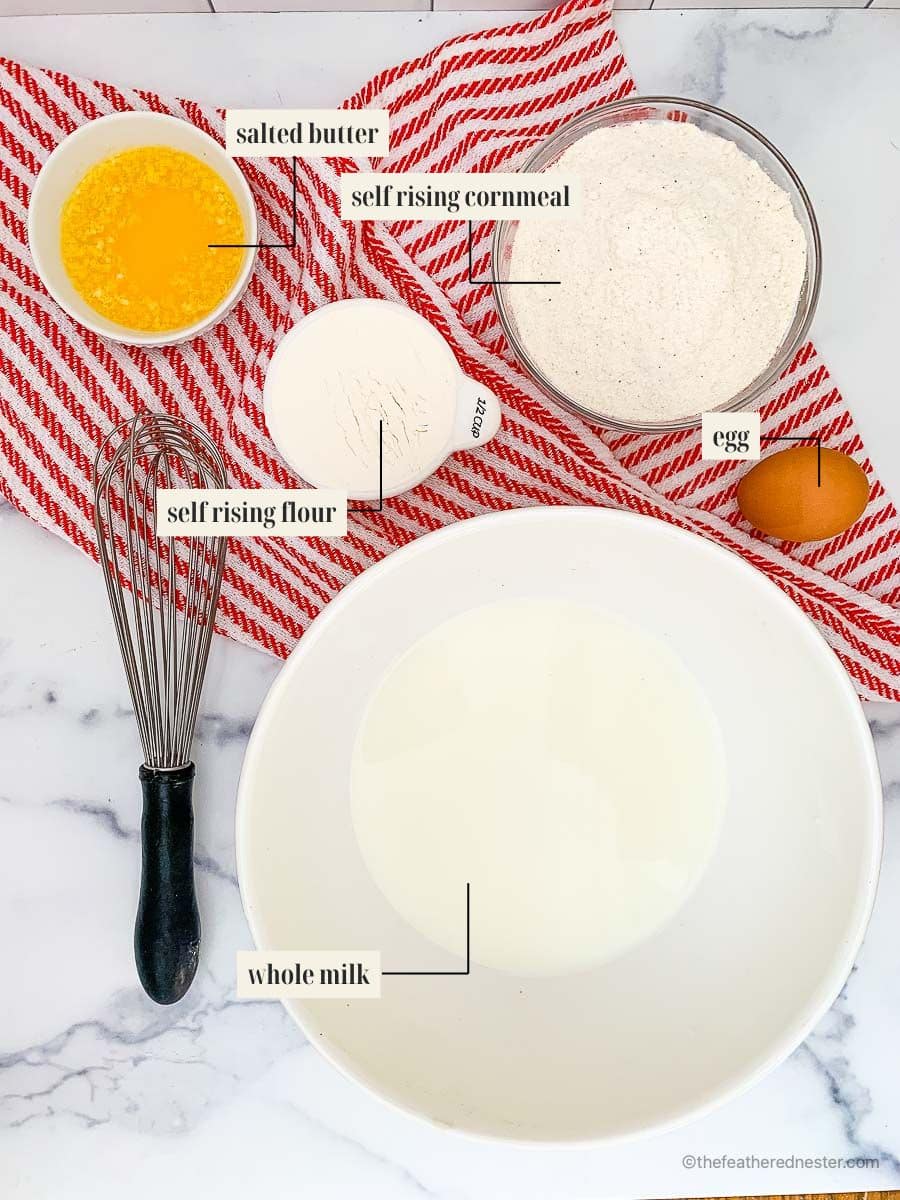
- Whole milk – This adds flavor and richness. You can also use buttermilk, almond milk, or any type of non-dairy milk if preferred.
- White vinegar – The acid in the vinegar, when combined with the milk, gives the cornbread a lighter texture. Much like buttermilk does!
- Butter – This can be swapped with vegetable oil, canola oil, or any other type of neutral oil. However, the butter gives this recipe a richer flavor.
- Egg – This acts as a binder and helps the cornbread to rise. But if you don’t want it with eggs, we have substitutes for eggs in baking!
- Self-rising cornmeal – I suggest using Martha White cornmeal. Or check our guide below for a DIY option.
- Self-rising flour – I like using Lilly’s unbleached self-rising flour. If you don’t have self-rising flour, check out our guide to making your own self rising flour.
- Sugar – This is optional. We just prefer sweet cornbread and usually include 1 tablespoon of granulated white sugar. However, it can be completely omitted, and it will still be tender and tasty.
Recipe Variations
There are endless ways to change this recipe. Here are a few of our favorites:
- Use honey or maple syrup in place of sugar.
- Add corn kernels, diced jalapeños, or green onions to the batter for extra flavor.
- Swap out the self-rising flour for all-purpose flour and add 1 teaspoon baking powder and 1/2 teaspoon salt to the batter.
- Brush the top of the cornbread with melted butter after baking for an extra golden crust.
- Use bacon grease in place of butter for a richer cornbread.
How to Make Self Rising Cornmeal
Make your own self-rising cornmeal mix that’s as good or better than that box of Jiffy corn mix or Martha White self-rising cornmeal! Simply mix these 3 simple ingredients:
- 1/2 cups of cornmeal
- 2 teaspoons of baking powder
- 1/2 teaspoon of salt
How to Make Self Rising Cornbread
Baking Preparation. Preheat the oven to 425ºF. Then spray cooking oil or vegetable oil on the cast iron skillet or cake pan.
Prepare the cornbread batter. In a large bowl, add whole milk and vinegar and let it sit for 5 minutes. Add the melted butter and egg to the milk mixture, and stir until it is well combined.
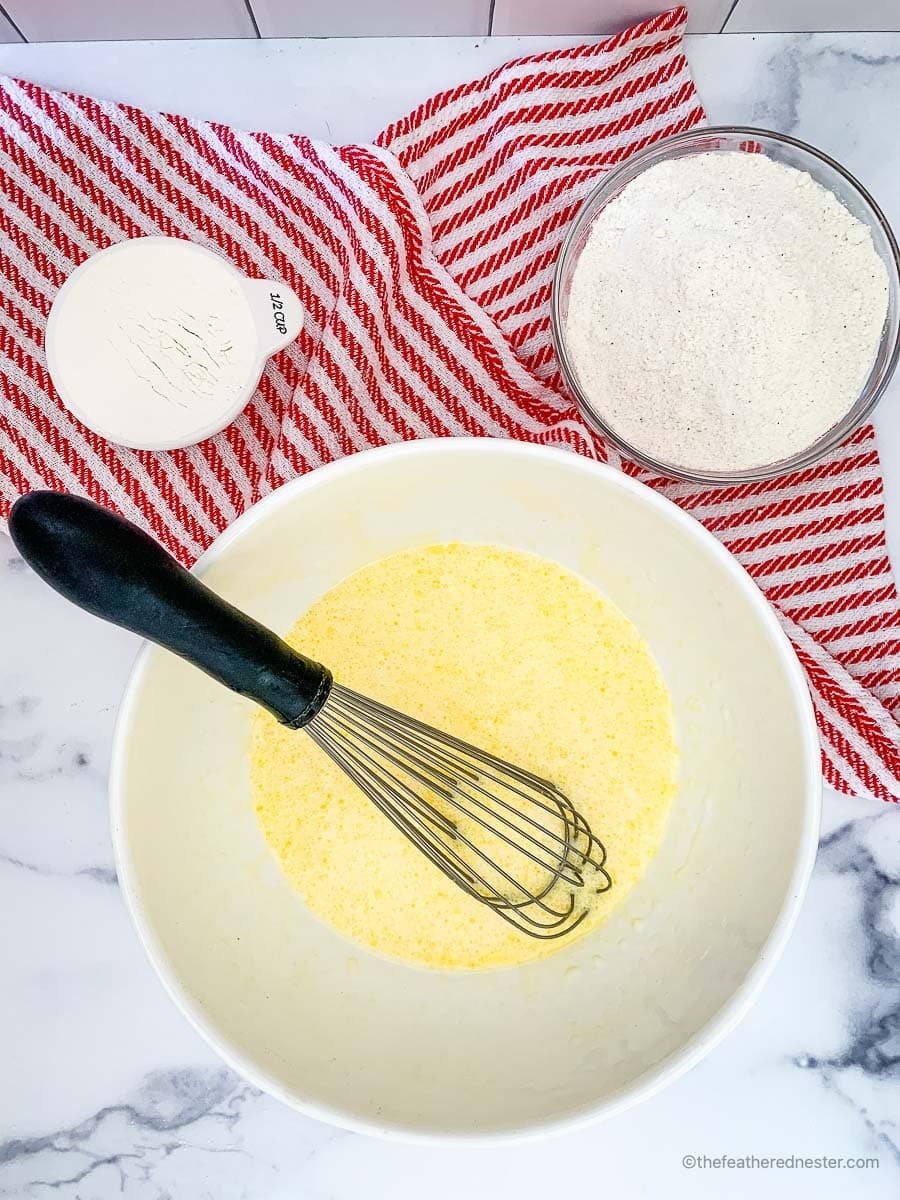
Then, add the self-rising flour and cornmeal (and sugar if using) and stir just until mixed for about 15 seconds. Do not overmix. Pour the batter into a prepared skillet or pan.
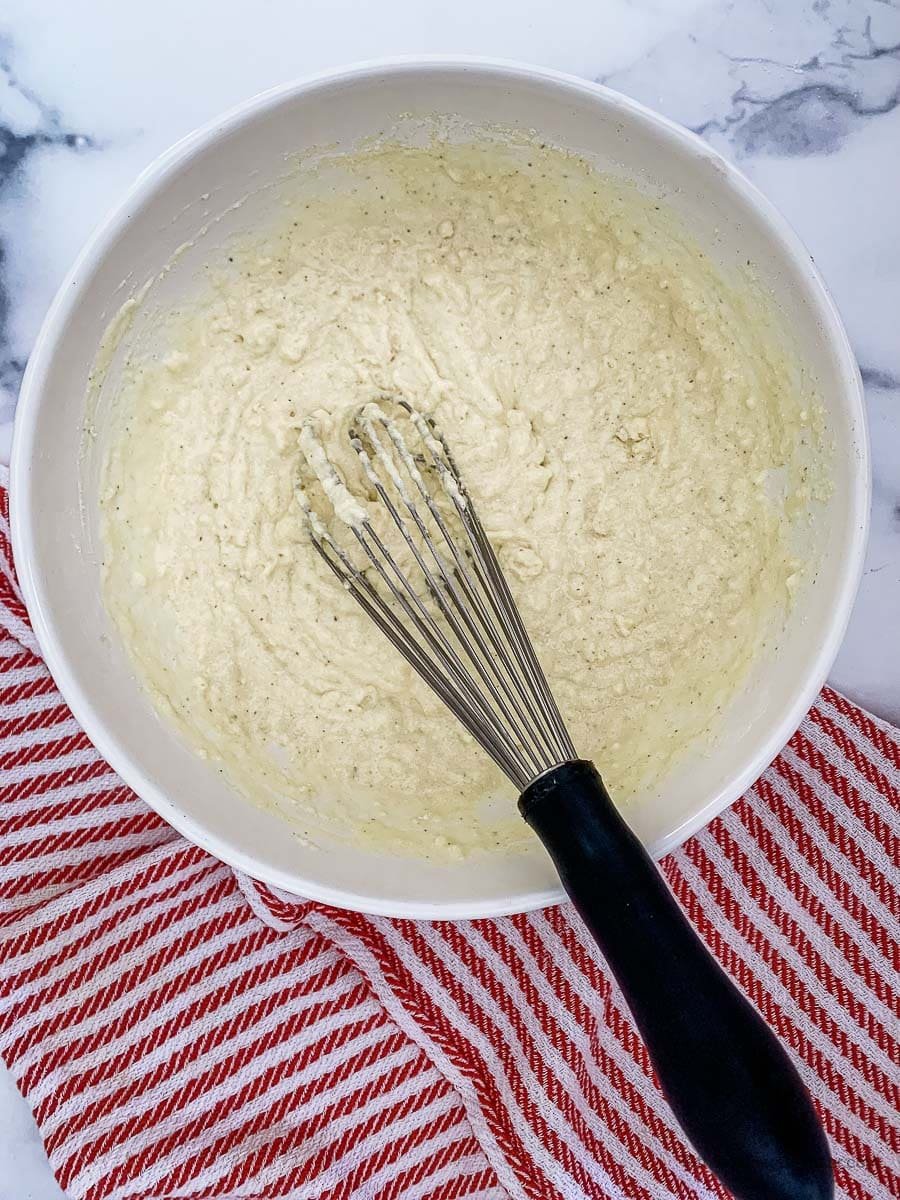
Bake the cornbread. Bake the cornbread at 425ºF for 20–25 minutes until it is golden on top and a toothpick inserted into the center of the pan comes out clean.

Ready to Serve. Serve the cornbread warm with butter and honey or jam.

Serving Suggestions
This self rising cornbread recipe is also best paired with our Instant Pot pork tenderloin and potatoes, pan seared boneless chicken thighs, sauteed chicken recipe, ranch pork chops in Crock Pot, calico bean, and how to make tortilla soup.
Or you can simply add a drizzle of honey on top, then serve with ham or bacon. A refreshing lemon juice or a cup of milk completes your meal.
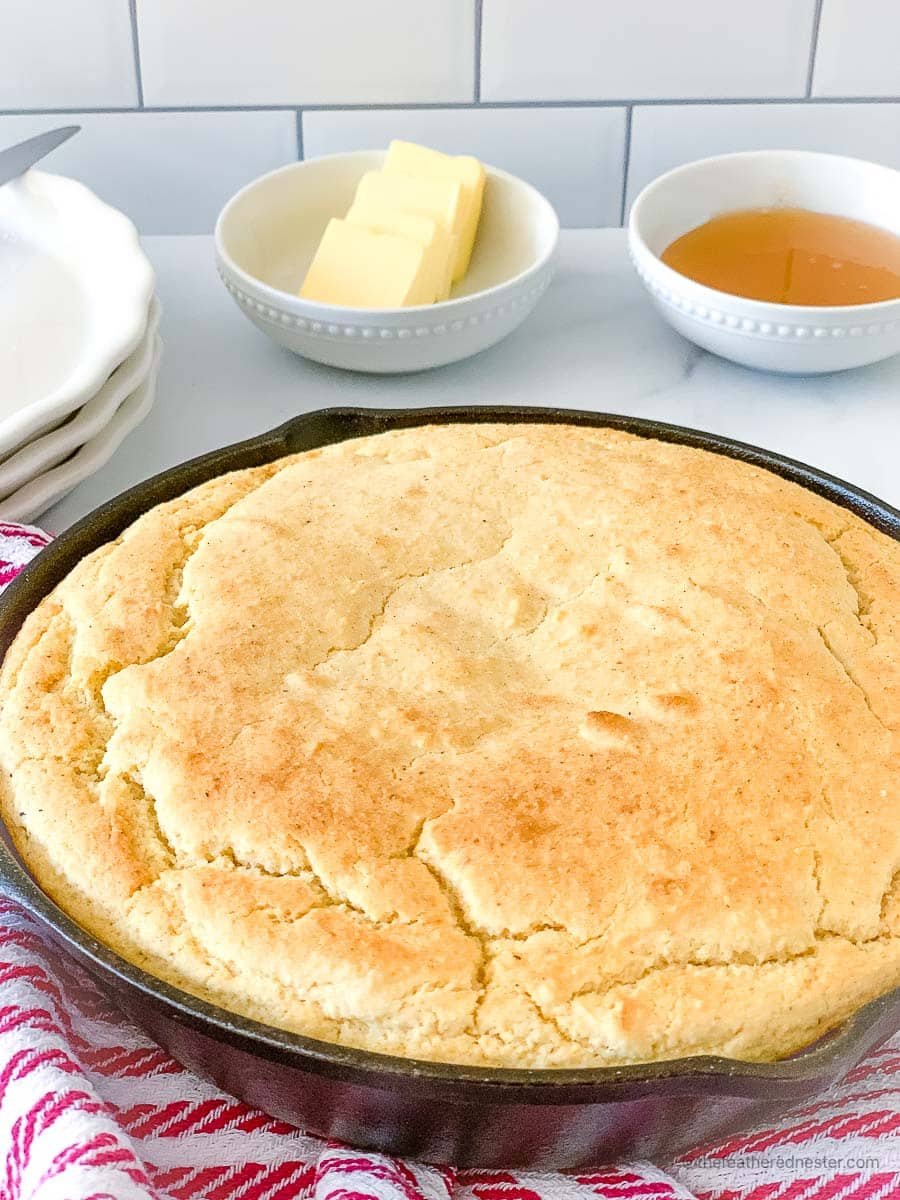
Self Rising Cornbread Recipe FAQs
Tightly wrap the leftover cornbread in plastic wrap or aluminum foil, or transfer it to an airtight plastic zipper bag. It’ll keep well for up to 2 days at room temperature, or for up to 5 days in the refrigerator.
If you’d like to freeze some for the holidays, let the bread cool completely, then transfer to an airtight plastic zipper bag. Store in the freezer for up to 3 months.
Thaw at room temperature for up to 4 hours, then wrap in aluminum foil and bake in a preheated 350°F oven for 5 to 10 minutes until hot. To use the microwave, wrap the bread in a lightly damp paper towel, then heat at 50% power for just 30 to 45 seconds.
🎯 TFN Pro Tip
To reheat, place slices on a baking sheet and warm at 350°F until heated through. You can also reheat individual slices in the microwave for about 15 seconds.
To use the microwave, wrap the bread in a lightly damp paper towel, then heat at 50% power for just 30 to 45 seconds
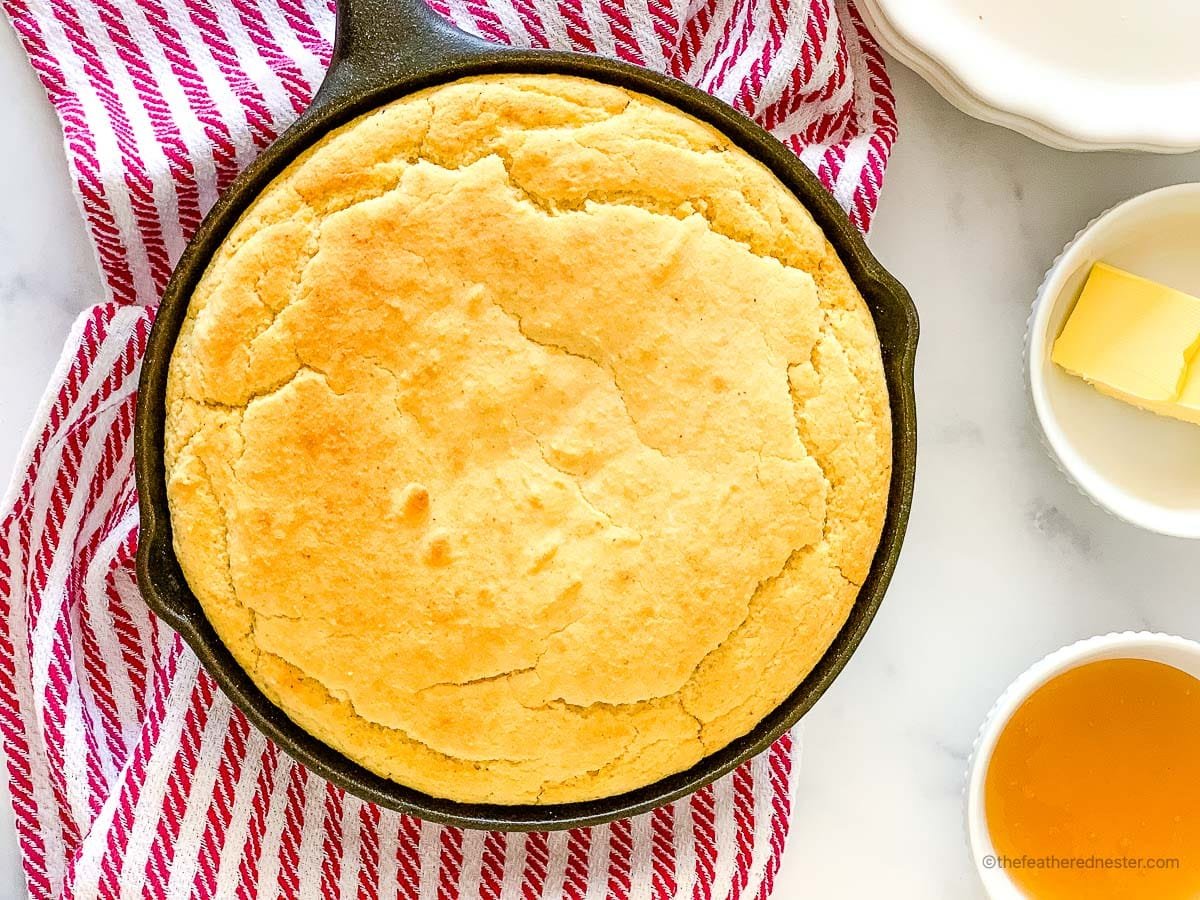
More from The Feathered Nester
If you tried this self rising cornmeal cornbread recipe or any other recipe on my website, please leave a 🌟 star rating and let me know how it went in the 📝 comments below. Thanks for visiting!
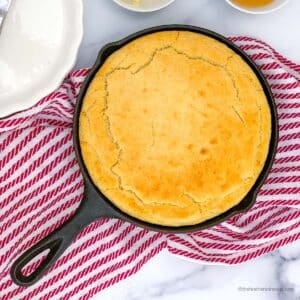
Self Rising Cornmeal Cornbread
Equipment
- skillet - OR
- round cake pan - OR
- 2-quart casserole dish
- large mixing bowl
- balloon whisk
Ingredients
- 1¼ cups whole milk or buttermilk – *If using buttermilk, omit vinegar from this recipe
- 1 tablespoon white vinegar
- 4 tablespoons salted butter melted and cooled
- 1 large egg beaten
- 1 ½ cups self rising cornmeal we recommend Martha white cornmeal; see Notes for substitutions)
- ½ cup self rising flour
Optional
- 1 tablespoon sugar
Instructions
- Preheat oven to 425ºF. Prepare a 9-inch cast iron skillet or cake pan by lightly greasing with cooking oil.
- To a large mixing bowl, add milk and vinegar and let sit for 5 minutes. Alternatively, substitute buttermilk for milk and vinegar, then proceed directly to the next step.
- Add the melted butter and egg to the milk mixture and whisk well to combine.To the bowl, add self rising cornmeal, self-rising flour, and sugar (if using). Using a large spoon, stir until mixture is just barely combined, about 15 seconds. Do not over mix. Pour batter into prepared pan and use the back of the large spoon to smooth batter into an even layer.
- Bake at 425ºF for 20-25 minutes, until cornbread is golden on top and a toothpick inserted into the center of the bread comes out clean.
- Serve warm with butter, honey, jam, or as desired.
Notes
- 1 1/2 cups cornmeal
- 2 teaspoons baking powder
- 1/2 teaspoon salt.
- To reheat, place slices on a baking sheet and warm at 350°F until heated through.
- You can also reheat individual slices in the microwave for about 15 seconds.
- To use the microwave, wrap the bread in a lightly damp paper towel, then heat at 50% power for just 30 to 45 seconds.
- Use honey or maple syrup in place of sugar.
- Add corn kernels, diced jalapeños, or green onions to the batter for extra flavor.
- Swap out the self-rising flour for all-purpose flour and add 1 teaspoon baking powder and 1/2 teaspoon salt to the batter.
- Brush the top of the cornbread with melted butter after baking for an extra golden crust.
- Use bacon grease in place of butter for a richer cornbread.
- Tightly wrap the leftover cornbread in plastic wrap or aluminum foil, or transfer it to an airtight plastic zipper bag. It’ll keep well for up to 2 days at room temperature, or for up to 5 days in the refrigerator.
- Thaw at room temperature for up to 4 hours, then wrap in aluminum foil and bake in a preheated 350°F oven for 5 to 10 minutes until hot. To reheat in the microwave, follow the note above.

Marianne McCombs says
I haven’t made this yet. I’m just a little confused about the prep of the skillet or pan. I couldn’t find anywhere that says to put the pan in the oven to heat while preparing the cornbread. On the initial instructions it says to pull the pan out of the oven, which is the only clue I found to tell me I need to put the pan in the oven. When you get to the actual recipe card it doesn’t even say to remove it from the hot oven. Or am I missing something?
Danielle - TFN Team Member says
Hi! Thank you SO MUCH for bringing this typo to our attention. No, there is no preheating required for the skillet. The batter goes into a cold pan. I’ve fixed the error.
Brettani C Shannon says
Question: My cast iron pan is larger, like 12 inches. Can I use it and double the recipe? If so what baking time would you change it to? Same temp? Thanks!!
Danielle - TFN Team Member says
I don’t see why not! I’d cook a little longer (around 30 min) and monitor the bread at this point, it may need longer as this hasn’t been tested as a doubled recipe.
Vickie Jenkins says
Best cornbread I have ever made!
Kate says
Delicious! I used buttermilk & changed the flour to 1.25 cups & cornmeal to .75 cups. Very tender & buttery flavor!
CBrown says
Can I make just w/self rising flour and regular cornmeal? I bought fine cormeal for polenta (word to the wise: just don’t do it!), but I ‘m not at home and don’t want to buy extra baking powder but would buy a very small bag of self rising flour.
Renae says
The short answer is no. Because the amount of self-rising flour used is lower (just 1/2 cup) than the amount of self-rising cornmeal (1 1/2 cups), I do not believe using regular cornmeal without adding in extra baking powder to compensate would work. You could probably use all-purpose flour and self-rising cornmeal together and have a good rise, but using only 1/2 cup of self-rising flour with regular cornmeal would not contain enough baking powder to give a good rise to the cornbread.